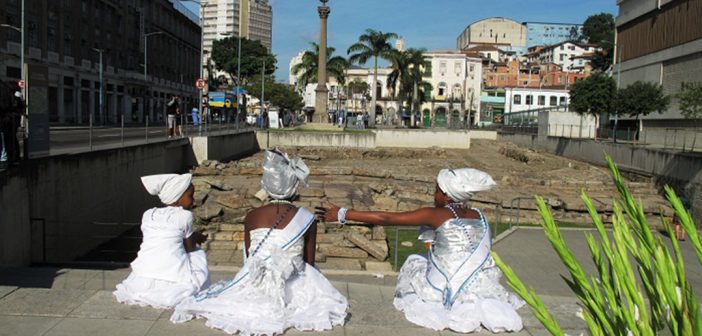Valongo Wharf (O Cais do Valongo), was the main port of entry for the African slaves taken to Brazil, and is in Rio de Janeiro’s docklands.
At the end of September, a representative of the International Council on Monuments and Sites – an organization which helps UNESCO decide on World Heritage sites – made a technical visit to the site as part of the evaluation process.
The archaeological site was not only the main entry point of African slaves to the Americas, but it also happens to be the only one which remains intact today. For all that it represents, it is the most significant vestige of the slave trade still standing on the American continent. Its nomination was accepted at the end of 2015 and it now awaits the final evaluation process, due to take place in June 2017, in Krakow, Poland.
The title of a Cultural Heritage Site will be a key moment in this unique recognition process. What started off as a blight on humanity and an offence to Africans contributed immeasurably to the cultural, economic and social development of a nation – Brazil. What’s more, the site now stands as a memorial to the countless slaves who suffered, fought back and eventually reclaimed their freedom, reinforcing the responsibilities not only of Brazil, but of all UNESCO’s member countries.
Brazil was the destination for approximately four million slaves, over the course of the three-centuries long slave trade, which was roughly 40% of the total who survived the journey from Africa. Roughly 60% of these four million souls disembarked in Rio de Janeiro, with around 1 million passing through Valongo Wharf. From 1774 until abolition, thanks to Brazil’s Viceroy, the Marquis of Lavradio, all the slaves who made landfall in Rio were processed through the region around Valongo Beach, where a slave market was built, as well as other commercial establishments, a cemetery and a leper’s colony.
The idea was to remove the disembarkation of African slaves and their trade from the Rua Direita, nowadays known as Rua Primeiro de Março. Once processed, the slaves were sent to coffee, tobacco and sugar plantations all over Brazil. Those who remained in the city were usually used for domestic services, or for urban construction projects. The arrival of the Portuguese royal family in Brazil, along with the growth of the coffee economy, contributed to a large increase in the need for slaves.
In 1811, as the trade in slaves and other ‘merchandise’ continued to expand, infrastructure work was carried out, including the paving a stretch of Valongo Beach which is now the modern day Valongo Wharf Archaeological Site.
The site stopped being used as a disembarkation point for slaves in 1831, when the transatlantic slave trade was banned after pressure from the English. In 1850, the trafficking of slaves to Brazil ceased, being officially abolished in 1888.
Construction work carried out on the Maravilha Port in 2011 revealed thousands of objects, including pieces of footwear, bone buttons, collars, amulets, intricate wooden rings and bracelets, as well as whelks and other items used in religious rituals. Among some of the rare finds were an antimony jewellery box, with images of a caravel and geometric patterns adorning its lid.
In 2012, Rio City Council transformed the space into a monument open to the public. The site started to feature on the Archaeological and Historic Tour Commemorating African Heritage, which recognises the significance of Afro-Brazilian culture in the city’s docklands.
On 20 November 2013, Black Awareness Day, Valongo Wharf was elevated to the status of a Cultural Heritage Site of the city of Rio de Janeiro, by the Rio Institute for Humanitarian Heritage (IRPH). UNESCO representatives have also recognised the site as being an official part of the Slave Route.
Photos: Press Release

















